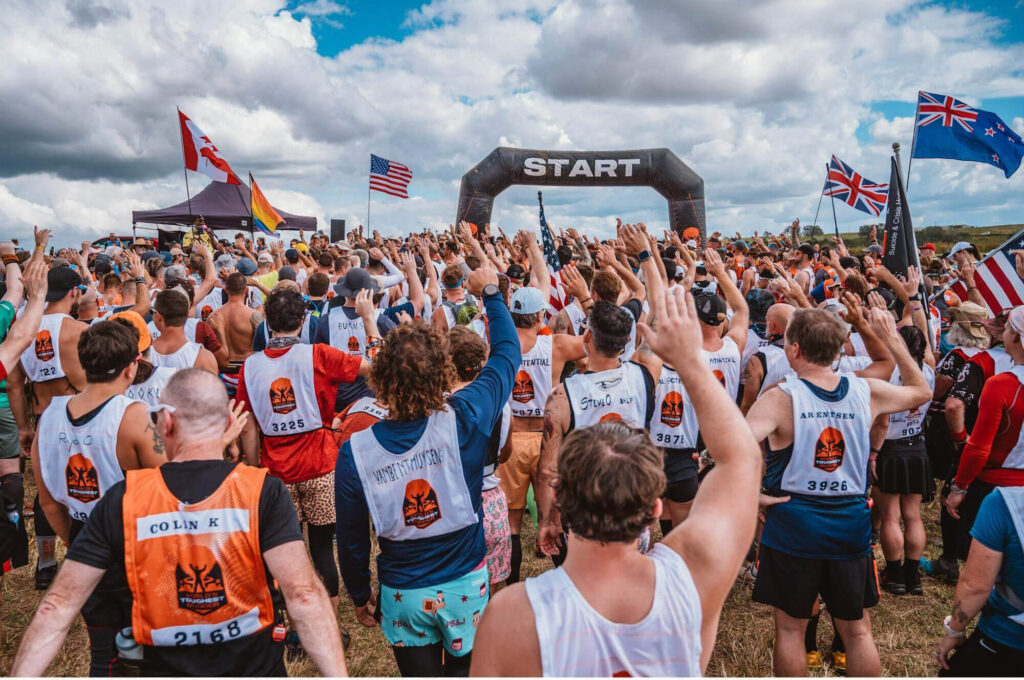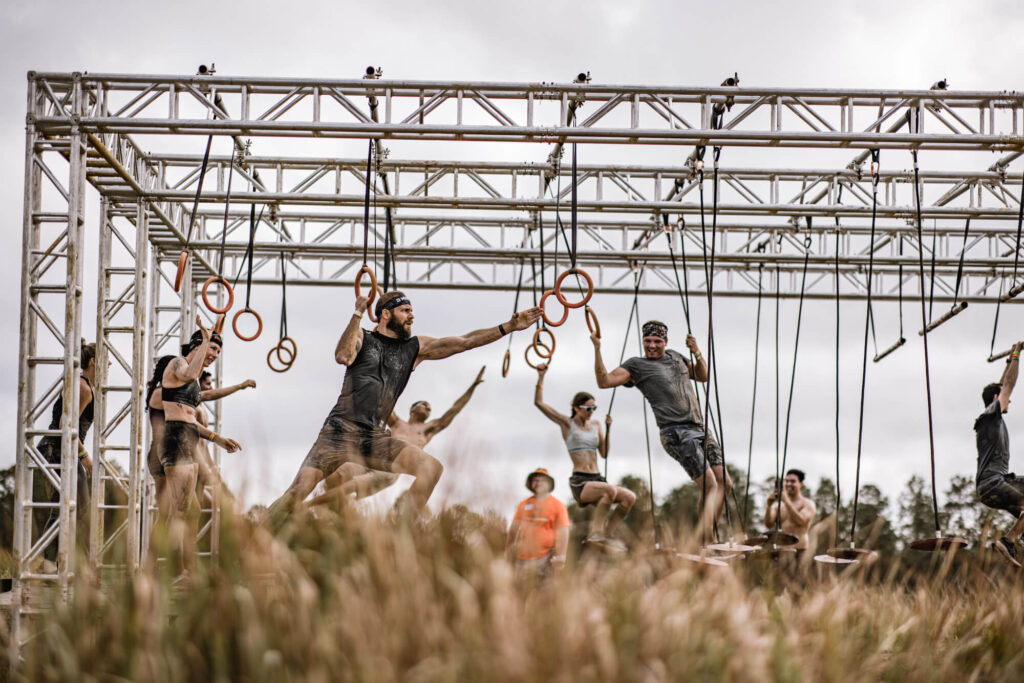Callouses, thigh chafing, and back-of-the-heal blisters are all part of being Mudder-in-training. But over time, Legionnaires figure out the best way to prepare and protect their skin from cuts, nicks, and sunburn (Socks? Check. Waterproof SPF 50? Check. Merrell All Out Crush Sneaks? Check) . Unfortunately, sometimes other annoying injuries like plantar fasciitis, tennis elbow, and ankle sprains occur during training. But a setback doesn’t have to count you out of a Tough Mudder training for too long.
Follow these 5 injury prevention and recovery tips to stay fit while you’re not 100%. You’re tougher than your injury, after all.
*Adhere to a qualified doctor’s recommendations for icing or heating injuries.
1. Ankle/Foot Injury

Ankle sprains and torn ligaments are two of the most common injuries in OCR training. As Mudder’s take on trail runs to prepare for the muddy terrain at Tough Mudder events, a misstep or a bad, awkward landing sometimes happen.
Plantar fasciitis, which is the inflammation of the connective tissue that connect the heel bone to the toes, is another common lower body injury in obstacles course athletes in the throes of training. To ease and stretch out the tight muscles of the foot that accompany this injury, roll the bottom of your foot with tennis ball. When the tennis ball is no longer effective, increase rigidity and power with a harder ball like a lacrosse or golf ball.
If you’re healing an injured ankle or foot, stay off your feet as much as possible. This doesn’t mean you have to halt your Tough Mudder training completely, but it’s best to do mostly seated exercises like overhead dumbbell presses, seated biceps curls, lying tricep extensions or skull crushers, seated machine chest press, and if your lower half is up to it: leg extensions and lying hamstring curls.
2. Knee Pain

Knee pain or as it is medically know “patellofemoral pain syndrome” (say that ten times fast), often occurs as a result of strength imbalances between the hamstrings and quadriceps, overuse from running on hard surfaces, or even just running with improper footwear.
If you start to develop knee pain, begin by eliminating aerobic activity (except swimming) for a week to keep pressure off the affected area. You don’t have to skip leg day entirely during this week, you can still do calf raises and hip abduction/abduction this week, but remove lunges, squats, deadlifts and leg extensions from your routine. Depending on the severity of and pain associated with the injury, it may take only a week for the pain to subside, but it could take up to two months. Once it begins to feel better, introduce the stationary bike and Stair Stepper into your routine as cardio. Then, gradually introduce running back into your training regime as tolerated. Of course, consult with a medical professional at these time periods if you are still in severe pain.
To reduce the risk of lower body injuries, practice landing softly during jumping and plyometrics exercise, and perform single leg squats with one leg raised on a bench (also known as Bulgarian Split Squat) to strengthen the muscles around the knee.
3. Tennis Elbow

Tennis elbow, or tendinosis, is a degeneration of a tendon’s collagen fibers due to overuse, can occur in Mudders that do the same training and lifting routine over and over again, which puts repetitive stress on the muscles and ligaments in your arms. If you have nagging elbow pain, avoid exercises that require extreme elbow extension like triceps extensions. Also, slow down the reps in your upper-body lifting movements (like overhead push press and clean and jerk) so that you’re spending 5-10 seconds to lower the weight (in the “negative” phase). A slow negative with lighter-than-usual weight takes the stress off the elbow joint when doing other upper body exercises such as overhead presses. With the right measures, you’ll be back to Stage 5 Clinger and Funky Monkey obstacle-specific training in no time.
4. Lower Back Pain

Lower back pain could be the result of a disc bulge, a condition where the pliable gel-like discs between your spine’s vertebrae start to get bigger and touch your spinal cord. A full-on disc rupture is also possible if the condition is exacerbated. But because there are many causes of lower back pain, it’s best to follow a qualified medical professional’s advice from the onset of serious pain. However, regardless the cause of the pain, within the first week of any lower back pain, avoid Romanian deadlifts, Olympic lifting, any squatting, and all rotational movements.
To reduce risk of lower back injury, strengthen and tighten your core with ab exercises like bird dogs, planks, and glute bridges so that your body can better-handle the stress and pressure of walking/running. If those exercises do not further agitate your back while you are healing, you can begin implementing them at the tail-end of your injury.
5. Shoulder Strain/Rotator Cuff Tear

As Mudder’s beef up their upper-body training days in preparation for Kong and Funkey Monkey, it’s important that they being with a light load to perfect form before moving on to heavier weights. Heavier training is not tougher, after all. Smarter training is. Too much weight too soon and with bad form, can lead to shoulder strain or rotator cuff tears. To prevent getting hurt when training for a Tough Mudder, don’t increase your weight too quickly. Increasing weight in increments of 2.5-5 lbs over the course of weeks is a good way to improve strength safely. Lastly, avoid not-so-obvious shoulder killers such as planks, pushups and bear crawls if you already have shoulder pain.




